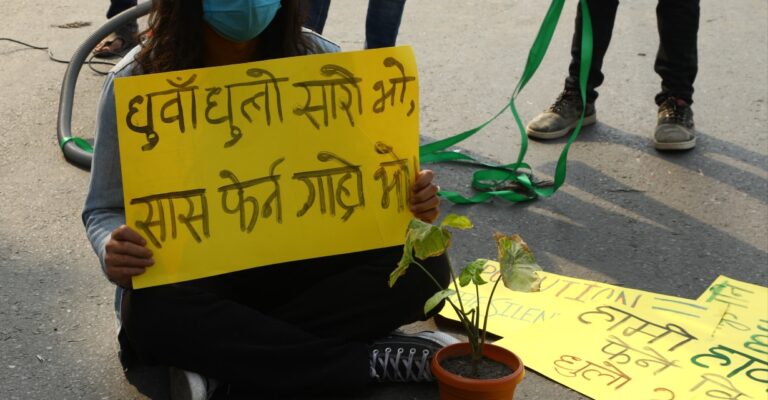
The Surkhet High Court has issued an interim order instructing local authorities to control dust in Birendranagar.
A single bench of Justice Rajendra Kharel issued the interim order asking the concerned local bodies to control the dust emerging from under-construction roads and road maintenance projects in Birendranagar, the capital of Karnali province.
Advocate Sher Bahadur Khatri had filed a petition in the High Court seeking a special and appropriate order saying that local residents were suffering due to excessive dust emerging from prolonged under-construction roads and maintenance works.
He had pleaded that the provincial authorities and the Birendranagar Municipality Office should ensure the citizens’ right to breathe clear air and kept the Office of the Chief Minister and Council of Ministers, Ministry of Industry, Tourism, Forest and Environment, Ministry of Physical Infrastructure Development, Directorate of Infrastructure Development, Birendranagar Municipality and District Administration Office, Surkhet as defendants in his petition.
“An interim order has been issued in the name of the defendants to control the dust emerging due to road construction or maintenance and maintain environmental cleanliness as failing to do so can cause irreparable damage to public health,” the order said.
Article 30 (1) of the Constitution of Nepal guarantees the fundamental right of every citizen to live in a clean and healthy environment.
Nepal is battling its worst forest fires in years, with smoke wafting across its mountains and souring the air as it settles into the capital city Kathmandu.
Five people have died so far trying to put out the fires that have been raging since January, said Sundar Sharma, a senior official of the National Disaster Risk Reduction and Management Authority.
Wild fires were burning in at least 60 places across 22 of Nepal’s 77 administrative districts, he said, adding to the growing levels of pollution across the country that lies nestled between India and the Tibet region of China.
Details on losses from the fires are still being collected, Sharma said. This has been the worst fire season by number since 2012, when the government started keeping records.
“Forest fires are the main reason for the rising air pollution in Kathmandu and many other places,” Sharma told Reuters.
“Wild fires could hit the peak later this month if the ongoing dry spell continued,” he said.
Nepal ordered schools to close for four days at the end of March after air pollution climbed to hazardous levels, forcing millions of students to stay home.
Forest fires often erupt in Nepal during the January-May dry season, when villagers burn dry leaves in the woodlands to prompt fresh grass growth for their cattle.
Sharma said the number of fires this year were 15 times more than those occurring in 2020. He didn’t immediately have a reason for the increase.
The air quality index (AQI) in Kathmandu was at an unhealthy level of 174 on Friday, according to data published on iqair.com, a site that monitors air quality. An AQI level below 50 is considered good.
“The pollution levels have come down in many places but this is not adequate enough for healthy breathing,” said Indu Bikram Joshi, a spokesman for the Department of Environment.





